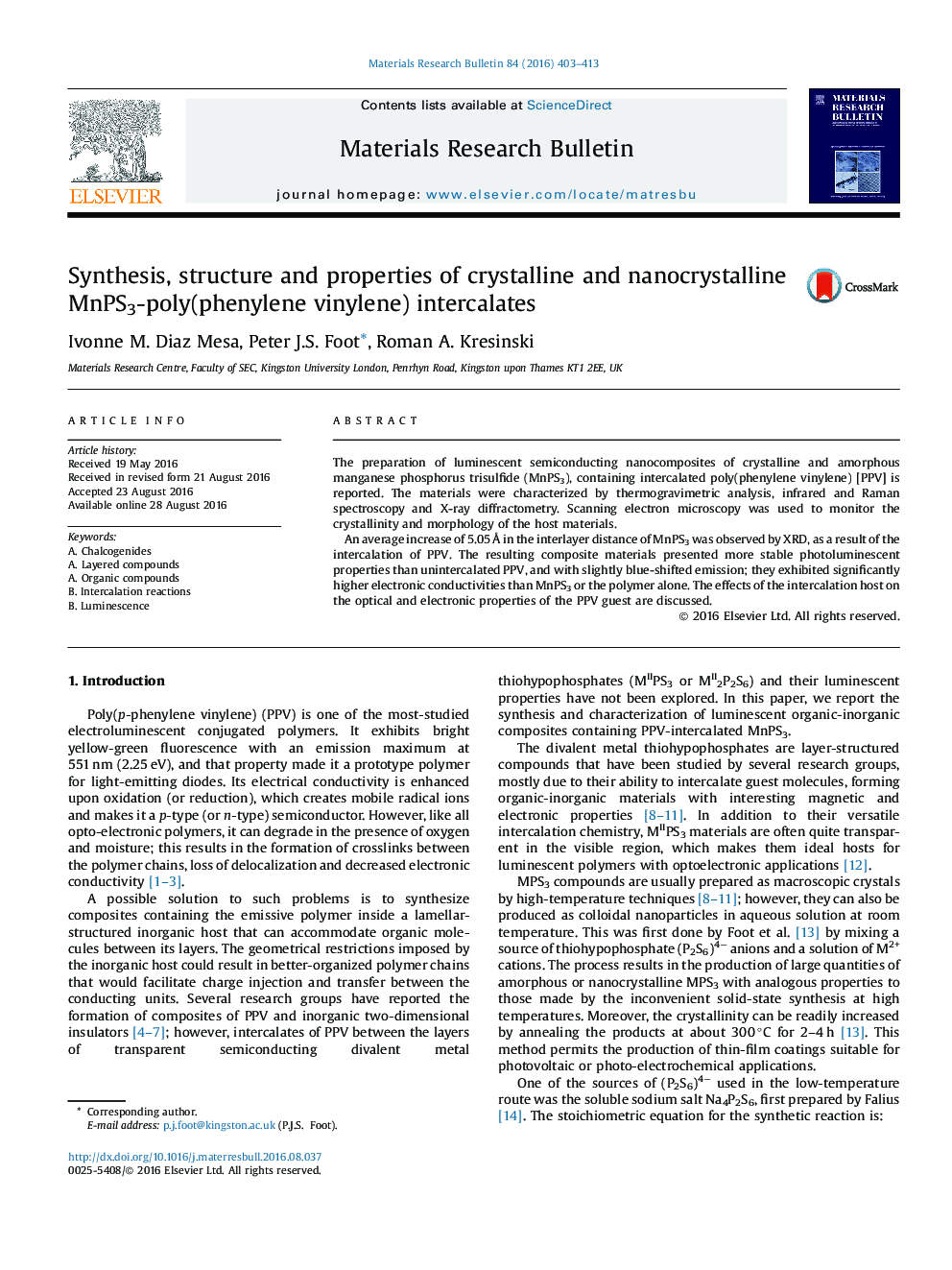| Article ID | Journal | Published Year | Pages | File Type |
|---|---|---|---|---|
| 1486904 | Materials Research Bulletin | 2016 | 11 Pages |
•First report of poly(phenylene vinylene) intercalation in layered MnPS3.•Compares systems based on high- and low-temperature synthesized MnPS3.•Structural and spectroscopic studies of the intercalates.•The hybrid organic-inorganic materials show stable photoluminescence.•Electronic conductivity is increased after the intercalation reaction.
The preparation of luminescent semiconducting nanocomposites of crystalline and amorphous manganese phosphorus trisulfide (MnPS3), containing intercalated poly(phenylene vinylene) [PPV] is reported. The materials were characterized by thermogravimetric analysis, infrared and Raman spectroscopy and X-ray diffractometry. Scanning electron microscopy was used to monitor the crystallinity and morphology of the host materials.An average increase of 5.05 Å in the interlayer distance of MnPS3 was observed by XRD, as a result of the intercalation of PPV. The resulting composite materials presented more stable photoluminescent properties than unintercalated PPV, and with slightly blue-shifted emission; they exhibited significantly higher electronic conductivities than MnPS3 or the polymer alone. The effects of the intercalation host on the optical and electronic properties of the PPV guest are discussed.
Graphical abstractFigure optionsDownload full-size imageDownload as PowerPoint slide
